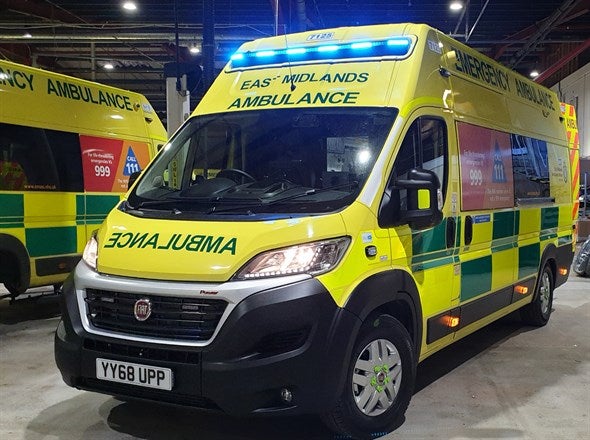Ambulance staff ‘unable to drive’ new vehicles because of their height
Taller staff reported struggling to fit in cabs of new fleet

Staff at an ambulance trust have warned they cannot drive a new fleet of vehicles due to their height and body shape.
The East of England Ambulance Service NHS Trust (EEAST) introduced the £54m converted Fiats to replace its ageing Mercedes vans. The model has been rolled out across the country in an effort to standardise NHS emergency vehicles.
But documents obtained by the BBC revealed a list of reported problems with the Fiats Ducatos with 160 staff members experiencing problems driving the vehicles.
Following an assessment, 94 people were identified as being unable to drive the vehicles. Complaints included back pain, restricted view of the windscreen and limited legroom.
Further issues included the engine cutting out when driving over potholes and speed bumps, pedals being too close together, and hands and fingers getting trapped in the sliding door.
An emergency medical technician told the BBC that they had problems with vehicle’s pedals and steering wheel, which made them unable to drive the ambulance.
“I was told that anyone over 5ft 9in (1.75m) would be unable to drive it as they would not be able to achieve a comfortable and safe driving position,” they said.
“I did try to get into the driver’s seat but I couldn’t adjust the seat to allow me to operate the pedals properly and the steering wheen was pressed against my legs, making it difficult to steer safely.”
The new fleet of Fiats were rolled out across the country following a 2019 report, which called for ambulance services to standardise their vehicles.
The report stated: “It is simply unacceptable that trusts purchase different ambulances and stock them with difference equipment and medicines.
“This demonstrably increases costs and there is an unarguable case to develop a common specification across England and move rapidly to centralised procurement for the ambulance fleet.”
Extensive testing was carried out on different trial vehicles before purchase of the Fiats was approved in 2018.
The EEAST has shared all details of the assessment with NHS England and Improvement (NHSE&I) and are in talks with other ambulance trusts about the vehicles.
An EEAST spokesperson said: “Our new fleet of ambulances was rolled out three years ago following extensive trials with colleagues and consultation with staff, trade unions, patients and carer groups.
“Since the rollout a small number of colleagues raised concerns about the cab area, which is the same as the current national ambulance specification.
“We have been working to address these issues – which affect a small proportion of our colleagues – through assessment by an independent ergonomist to identify potential modifications to the vehicles.
“We have also retained some of our older Mercedes fleet for staff who are unable to drive the Fiat ambulances, and we are exploring further options for a more permanent solution.”
Subscribe to Independent Premium to bookmark this article
Want to bookmark your favourite articles and stories to read or reference later? Start your Independent Premium subscription today.

Join our commenting forum
Join thought-provoking conversations, follow other Independent readers and see their replies